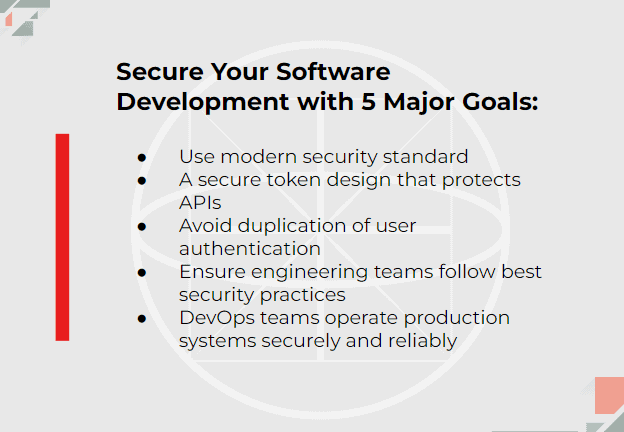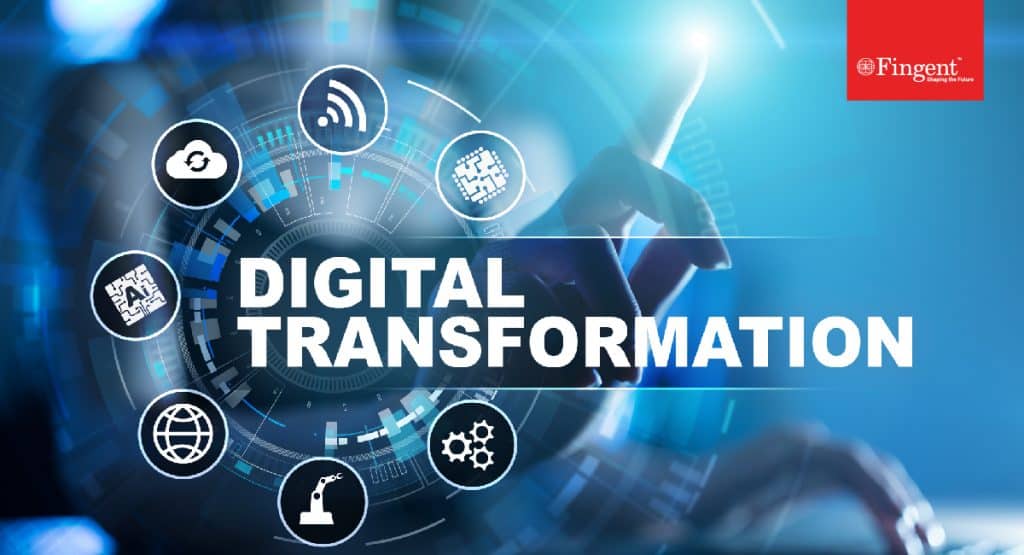Tag: Application Modernization
The world of technology is evolving at a fast pace, with newly emerging advanced applications almost every day. With the significant growth of technology, we can also witness the transition of companies from legacy systems to modern systems. That is what gives your business true agility.
Application modernization assists companies in eliminating needless operating costs, lowering capital expenditures, and freeing up workers to pursue new initiatives and revenue-generating plans. In this article, we will look at what modernizing your system application looks like and how it can benefit your company’s growth and success.
“In Today’s era of volatility, there is no other way but to re-invent. The only sustainable advantage you can have over others is agility, that’s it. Because nothing else is sustainable, everything else you create, somebody else will replicate.” — Jeff Bezos, Founder, Amazon.
What Is Application Modernization?
In simple words, it is the practice of updating old software systems, also known as legacy systems, in order to retain the memory data but still benefit from the new framework. It is like renovating a house. Rather than discarding the older system, we can give it a good remodel and enhance its efficiency.
The global application modernization services market was valued at USD 11838.15 million in 2021 and is predicted to grow at a CAGR of 14.31% over the forecast period, reaching USD 26405.06 million by 2027. For many businesses, this entails re-programming existing legacy workloads onto current cloud-based platforms or splitting monolithic software into smaller components, such as microservices, and then programming these microservices.
Why Has It Become Essential?
The main and most obvious reason for application modernization is to enhance efficiency, which will in turn give the company a better stand in this immensely competitive industry. Modernizing apps may help businesses take advantage of new technology and streamline processes among other things.
Remember that there is an unseen cost in trying to make do with legacy software. Outdated software can reduce productivity, stifle expansion, and degrade the customer experience. On the other hand, a strong application modernization plan will also lower the resources needed to run an application, enhance the frequency and dependability of deployments, and improve uptime and resilience.
Top Benefits
Listed below are the top benefits you can experience by modernizing your system software:
1. Improved efficiency
Modernizing applications enables organizations to simplify processes, minimize layoffs, and automate repetitive procedures, resulting in higher productivity and resource utilization. App modernization also helps to maintain a variety of existing procedures, ensuring company continuity. According to IBM, upgrading legacy systems can increase developer productivity by up to 40%.
2. Cost benefits
You will cut expenses, improve dependability, and boost consumer confidence, and also position your organization to seize new possibilities faster. According to Intel, recent research found that when organizations lower their technical debt load by updating their legacy app portfolio, they get immediate savings of 32% of their IT expenditure.
3. Scalability
Modernized applications are often built to be more scalable, making it simpler to handle growing workloads and respond to changes in user demand. This is critical for businesses as they expand and need to support a larger user base or more sophisticated processes.
4. Flexibility
The flexibility of a business goes hand-in-hand with its ability to scale from smaller user bases to larger user bases. It can also be seen from the perspective that with advanced technology as your backbone, your company is more flexible to adaptations, upgrades, and changes in general. Agility is a product of flexibility and the best example for this is how Pinterest grew its user base from 50,000 to 17 million in only nine months by moving its processing and storage to Amazon Web Services.
5. User experience
For any organization, customer experience is the topmost priority. Giving your users what they want and keeping them satisfied is the main goal. Modernized programs frequently have more user-friendly interfaces, enhanced navigation, and responsive design. This improves the user experience and helps to retain consumers, perhaps leading to higher customer satisfaction and loyalty
6. Integration capabilities
Modernized applications provide for easier integration with other systems and third-party services. This is critical for businesses trying to establish a unified digital environment in which data and processes flow seamlessly between apps and platforms. As applications migrate to the cloud, the ability to link them to databases and other resources becomes critical in generating cost savings and enhanced creativity.
7. Competitive edge
Ultimately as mentioned above, the main goal is a competitive edge, a winning chance, a head- start in the race. Modernized apps may help businesses remain ahead of the competition by allowing them to offer new features, deliver faster updates, and adapt to market changes more efficiently. By offering unique, quick-to-market applications, your company may better adapt to new market possibilities, increase efficiency, and engage consumers. According to IDC research, companies that engage in modern application development processes get 51% faster time-to-market and 41% more frequent distributions of software than those who do not.
Don’t Let Your Legacy Applications Sloth Your Business Growth. Plan Your Application Modernization Project Today!
Identifying When Your Company Needs Application Modernization
Identifying when your company’s systems require modernization is critical for staying competitive, increasing productivity, and ensuring long-term success. Here are some significant indicators that it is time to explore application modernization:
- Performance Problems: Recurrent problems with your applications, including sluggish response times, system failures, or blackouts, may be a sign that they are not able to handle the current workload.
- Security Vulnerabilities: Security risks are more likely to affect legacy systems. Your company is vulnerable to data breaches and cyberattacks if your apps do not have the latest security features and upgrades.
- Lack of flexibility and scalability: Your organization’s growth may be hindered if your present applications are not flexible and scalable enough to meet changing business requirements or rising workloads. In order to adapt to changing requirements, modern applications are made to be more scalable and adaptable.
- Difficulty in Integration: Data flow and cooperation may be hampered if your applications are difficult to integrate with other systems in your company or with outside partners.
- Inadequate user experience: A poor user experience can result in customer and staff dissatisfaction. Your applications could benefit from modernization if they lack features that improve usability or have an outdated user interface.
The Best Strategies For Application Modernization
Application modernization is a complex process that requires severe attention to details. It’s often beneficial to work with a cross-functional team and involve key stakeholders throughout the modernization journey. Here are a few of the best strategies to adopt while modernizing your system software application:
- Automation Is Key: Modernization teams are frequently stuck with manual methods that do not scale across a complete application estate. Thus, adding intelligent automation, AI, and data science to modernization and developing a repeatable pipeline for refactoring are critical.
- Define business Goals: An application modernization evaluation begins by defining which business goals the company wants to achieve through modernization. Common corporate motivations driving app modernization include cost savings, performance enhancement, enhanced security, and simplified management.
- Deep Application Observation: To modernize an existing monolith, deep observation is required in addition to basic static code analysis. This includes deeper domain-driven behavior analysis and continuously tracking dependency interactions.
- User Training and Change Management: Make investments in these areas to help end users move smoothly. Emphasize the advantages of modernization initiatives and offer assistance throughout the adoption process.
- Frequent Updating and Maintenance: The process of modernization never ends. To ensure that programs stay up-to-date with changing business requirements and technology changes, schedule frequent upgrades and maintenance.
How Can Fingent Help?
Leveraging app modernization to improve efficiency is a challenging task, but worry not because a competent development solution like Fingent can accomplish it with ease. At Fingent, our team of professionals can implement cutting-edge technology such as cloud-native solutions, artificial intelligence, and machine learning software in your organization. With satisfied customers worldwide, we provide tailored service and support to fit your company’s needs, with the flexibility to scale as needed.
Contact us to learn more about how we can help!
Stay up to date on what's new

Featured Blogs
Stay up to date on
what's new



Talk To Our Experts
In the ever-evolving landscape of cybersecurity, application security stands as the impervious armor that shields your organization’s digital fortresses. Imagine your organization’s applications as the kingdom’s gates – if left unguarded, they become vulnerable entry points for malevolent forces. We understand that as a CIO, CTO, or IT Manager, you take your duty seriously to ensure these gates are fortified.
In order to assist you in this regard, in this blog, we will delve into the realm of application security and shed light on the importance of each layer of defense. We will also explore how a proactive approach to application security can save your organization from potential disasters.
Why Application Security is a Concern
In an era marked by rapid digital transformation, applications have become the lifeblood of businesses. They manage sensitive data, perform critical functions, and are often the first line of interaction with customers. However, these very assets can be exploited if not adequately secured.
Just as the strength of a fortress determines its ability to withstand attacks, the security of your applications dictates your organization’s resilience against cyber threats. Data breaches, unauthorized access, and system vulnerabilities have become common adversaries in today’s digital age.
Picture this: By 2023, ransomware attacks had hit an astonishing 72% of businesses worldwide, marking a significant rise over the past five years and setting a record high. This emphasizes why application security must be at the forefront of your defense strategy.
The consequences of such breaches are dire, leading to financial losses, reputational damage, and regulatory penalties. According to studies, in 2023, data breaches cost companies worldwide an average of USD 4.45 million, showing a worrying 15% increase in just three years. This statistic underscores the urgency of investing in robust application security measures. So, how can you be prepared?
The Building Blocks of Application Security
The Foundation: Architecture Choices
Every castle begins with a strong foundation, and the same principle applies to application security. The architecture choices you make at the outset are akin to building a formidable fortress. An ill-conceived architectural design can leave cracks in the walls for attackers to exploit.
Just as an architect meticulously plans the layout of a castle, your development team should consider security measures when designing your applications. A single weak link in your architectural chain can lead to disaster. Empirical data reveals that a significant 50% of vulnerabilities stem from poor architectural decisions.
Investing time and resources in designing secure architecture is a proactive approach that can significantly reduce the likelihood of security breaches down the line.
1. Building Strong Walls: Coding Practices and Code Organization
The walls of a fortress serve as the primary defense against intruders. In the world of application security, coding practices and code organization are your virtual walls. Sloppy coding practices create chinks in the armor, allowing malicious code to infiltrate your application.
What can you do?
Imagine coding as the masonry work – each brick (line of code) must be laid meticulously to ensure structural integrity. Security breaches can often result from code vulnerabilities. Ensuring your development team adheres to secure coding practices is akin to reinforcing your fortress walls.
Implementing secure coding practices, conducting regular code reviews, and enforcing coding standards can mitigate vulnerabilities. Training developers in secure coding practices is a crucial step in enhancing your application’s security posture.
2. The Gates and Drawbridges: Library Updates
Just as a castle’s gates and drawbridges are essential entry points, your applications rely on third-party libraries and components. These elements, if left unguarded, can become weak points in your security defenses.
Applications often rely on third-party libraries and components. A concerning fact is that out of about 433,000 websites analyzed, 77% of them use at least one front-end JavaScript library with a known security issue.
Think of libraries as the mechanisms controlling the gates of your fortress. Failing to update them is like leaving the drawbridge down, making it easy for attackers to breach your defenses. Regularly updating these libraries is similar to raising the drawbridge and securing your gates against unwanted visitors.
Additionally, employing automated tools to scan for vulnerabilities in third-party dependencies can help identify and address issues promptly.
3. The Watchful Guards: Application Security Program Management Solutions
Medieval fortresses had vigilant guards patrolling the battlements. Similarly, modern organizations require robust application security program management solutions to keep a watchful eye over their digital assets.
A stark reality: 66% of CIOs are ramping up their investments in cybersecurity. This surge in adoption underscores the growing recognition of the importance of a structured approach to application security.
So, think of these solutions as your digital sentinels, tirelessly scanning for threats and vulnerabilities. These systems serve as your first line of defense, ensuring that potential threats are identified and neutralized promptly.
Read more: A CTO’s Guide To Secured Software Development
How Fingent Helps Fortify Your Digital Kingdom
Without a robust application security strategy in place, your organization is vulnerable to attacks that could have far-reaching consequences.
Just as medieval kings relied on skilled architects, craftsmen, and sentinels to protect their castles, you can depend on Fingent to safeguard your digital kingdom.
At Fingent, we understand the importance of application security, and our expertise in secure architecture design, coding practices, library updates, and application security program management ensures your digital fortresses remain impenetrable. With a deep commitment to security, we offer cutting-edge solutions to protect your digital assets.
In this age of digital warfare, application security is not just an option; it’s your shield against an ever-growing army of cyber threats. Fingent can be your trusted ally in this digital battlefield.
Stay up to date on what's new

Featured Blogs
Stay up to date on
what's new



Talk To Our Experts
Reduce your operational costs and unnecessary investments with legacy modernization
Since the pandemic started tightening its grip on the world, businesses have seen an unmistakable acceleration in digital transformation. Legacy application modernization enables enterprises to have the agility and ability to respond to dynamic changes. Software technologies are being enhanced and deployed at an unprecedented scale, and most businesses have noted a high appetite for digital transformation.
Read more: A Detailed Guide to Understanding Digital Business Transformation
Your business should also have an application modernization strategy to ensure business continuity and growth in a highly volatile market. Modernizing your existing applications or systems is the best way to monetize the current capital and avoid unwanted technology investments.
Legacy application modernization helps you get rid of accumulating technical debts and business paralysis. This blog discusses how application modernization enables businesses to transform digitally and scale up during the pandemic.
What is application modernization?
Application modernization involves updating older software for new computing approaches. These updates include new languages, frameworks, and infrastructure platforms. We can compare this update to renovating an older home, enabling it with better safety, structural integrity, ease of use, design, and so forth. This practice is also called legacy modernization. Legacy modernization extends the lifespan of your applications instead of replacing them wholly. Such an approach will allow your business to take advantage of technology innovations.
Most businesses have thoughtfully invested in their existing application portfolio. Some companies are ready to retire these applications and adopt the latest. However, this can be costly from both a financial and operational standpoint. Hence, “application modernization is the most sensible way to leverage newer platforms, tools, and frameworks.”
Read more: Why modernize your legacy systems? What’s the best approach to legacy systems modernization?
5 ways application modernization enables businesses to scale up during the pandemic
Owning and operating outdated software can present a variety of challenges during the pandemic. Outdated software can accumulate problems over time, resulting in employee and customer frustration. Here’s how application modernization helps businesses scale up during the pandemic.
Read more: Six Common Enterprise Software Development Myths Debunked
1. Application Modernization reduces costs
Because of diminishing resources during the pandemic, “cost“ has been the most important driving factor for application modernization. For example, the more data you accumulate, the more you have to pay for the on-premise data center forcing companies to buy new storage systems more frequently.
It is expensive to own and maintain the infrastructure as they incur extra costs for cooling, space, and electricity. Apart from these expenses, you would need a dedicated IT team to maintain a vast storage system. Therefore, it is reasonable and beneficial to invest in timely application modernization that helps avoid all the costs mentioned above.
Read more: Four Ways to Future-Proof Legacy Applications
2. Enhances customer experience
With stiff competition, the market has turned into a battleground for businesses that sell similar products and services. In this scenario, customer experience is what will set a company apart. Continued use of an outdated system can hurt your customer experience because they have limited functionality. Legacy software affects efficiency and waiting time. Additionally, the security problems of legacy software can easily compromise your business and customer data, impacting your brand severely.
On the other hand, a customer expects your business to keep up with the latest trends and technology. Application modernization can enhance your customers’ experience by transforming the end-user interface, automating manual processes, and creating new features. Essentially, your business operations will be more efficient with more stable systems, quicker fixes, and better security. All of it together sets your business apart, ensuring your business thrives during the pandemic.
3. Enables you to create new features and services
You may have invested in software that is perfect for your current needs. However, the pandemic has taught us that change is inevitable. An application that is working well today may not perform so tomorrow. Every new patch, release, or update that is not purpose-built will be a problem for you. It is challenging to meet the changing customer needs during an economic downturn.
Thankfully, application modernization allows your business to create new features and services that align with your current and future goals. These new features and services can be purpose-built for your business to ensure the legacy application continues to provide value today and into the future.
4. Improves employee productivity
You cannot expect your employee to work with applications and systems that seem to take forever to respond or perform simple operations. Just as businesses expect efficiency from their employees, employees expect their companies to provide high-performance technologies in their offices.
Working on outdated applications can frustrate your employees, lowering their performance and hindering their success. Legacy and low-performing software can increase work stress resulting in missed deadlines. It can also affect overall productivity as it irritates and demotivates your workforce.
Application modernization can automate several repetitive tasks and processes, freeing up your employees to concentrate on more intelligent tasks. It will save time and increase the efficiency of your employees. Since modernization minimizes application problems, it allows you to develop more features designed to streamline your operations.
Watch video: New Technologies for Workforce Management and Optimization
5. Erases technical debts
Technical debt creates friction between developers and their work. It may increase their job tomorrow, as the situation demands them to take the fastest and shortest approach to deliver the project today. Technical debt includes the implied cost of additional rework that developers have to bear for taking a shortcut today. It is translated into incremental cost and loss of agility because of prior decisions intended to save time or cost. Moreover, technical debt can build up to a point where developers will not be able to do anything to rectify it. Technical debt can result in increased maintenance costs and the inability to add new features. Since each part depends on the other, any attempt to fix one part might cause some damage to another.
Application modernization can erase technical debt because it eliminates the need to replace your existing systems completely. Thus, your company need not spend resources to maintain an outdated code. It will also reduce overall problems from technical debt. Legacy software modernization fixes your application’s glitches and makes it more robust and healthy.
Modernize your apps without burning a hole in your pocket
Your business can get up to speed with application modernization without investing heavily in all new systems. With application modernization, your business will see increased revenue in the long run. It boosts productivity and enhances the security of your applications.
Get started on your mission to legacy modernization. We at Fingent software development experts can help you make smart decisions and find the most effective way to modernize your systems without leaving a gaping hole in your company’s resources. Give us a call, and let’s get talking.
Stay up to date on what's new

Featured Blogs
Stay up to date on
what's new



























































